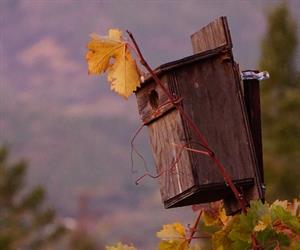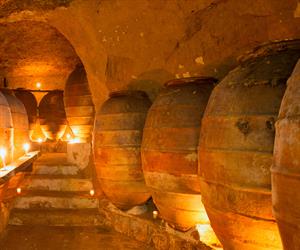Knowing how to create the perfect wine tasting notes is a useful tool for every wine lover. There are various reasons why wine tasting notes are so valuable, but the main reason to take wine tasting notes is for memory. Taking notes helps you discover and remember what wines you love and what you don't, all while learning to distinguish between wine varieties from different parts of the world. The team at Theorem Vineyards has put together four basic tips to help you write descriptive, helpful, and professional-level wine tasting notes.
How to Take Useful Wine Tasting Notes
Although there isn't a right or wrong way to write wine tasting notes, there are the basic notetaking steps that will help. Taking basic tasting notes will enhance your memory of every wine you taste—even if you come back to your notes months or years later. Taking tasting notes isn't only about identifying the structure or tannins of the wine; it is also about taking note of the winemaking techniques or the region the wine was produced in.
To create useful wine tasting notes, we recommend creating a template that lists key indicators of your wine tasting process. The more organized your notes are, the easier it will be to reference in the future.
We typically like to list five key indicators to create wine tasting notes.
#1: Note All Wine Details & Origin Information
The first thing you should add to your wine tasting notes is the producer, the wine's full name, the region of origin, its grape variety or varieties, the price, and alcohol content. You can also jot down any other information you find interesting or useful about the wine, including its history, vineyard soil type, etc. These notes will help you get a deeper understanding of different wine producers and regions.
#2: Write Down Any Aromas You Identify
Next, take notes of the different aromas you identify in the wine. Primary aromas are usually fruit, floral, and herbal aromas. You may also identify aromas of yeast and fermentation. These aromas may smell like yogurt or fresh bread. You might even smell aromas of vanilla, baking spices, roasted nuts, and smoke if the wine was aged in an oak barrel. When listing down aromas, be sure to add as many details and specifics as possible.
#3: Describe the Wine Structure: Acidity, Tannin & Body
For wine tasting basics, we recommend taking notes of structure elements by using a simple Low-Medium-High scale for each of the structure points: acidity, tanning, and body.
- When taking notes about acidity, describe how tart or sour the wine is. You will feel the wine’s acidity underneath your tongue. If a wine has high acidity, you will naturally salivate under your tongue.
- When trying to describe the tannin, ask yourself how much grip the wine has. Do you feel tiny prickles when you taste the wine? Tannin can sometimes be fine or even velvety. You will feel tannins on the side of your cheeks as a grippy sensation.
- When describing the body of the wine, focus on how it feels in your mouth and the weight on your palate. For example, a pinot has a lighter body and will feel lighter and leaner on the palate while a full-bodied cabernet will be heftier and more encompassing on the palate. Describing the body as clearly as possible is important because that is what will help you build a good profile.
#4: Describe the Finish of the Wine
The finish of the wine is how long the wine's taste remains on your palate. The finish stems from the wine's flavor and overall finesse. You can also tell the quality of the wine based off the finish—the longer the finish, the higher the quality. Some wines have a softer finish. For example, some white wines have a gentle, elegant finish that revolves around the creamy texture. Other wines have a tart or tingly finish. In this case, the wine might taste more tart or bitter. Some wines have a refreshing, juicy finish—common among younger wines.
Practice Taking Wine Tasting Notes at Theorem Vineyards!
Creating precise wine tasting notes takes practice. One of the best ways to improve your notetaking skills is by keeping an open mind every time you open a new bottle of wine. Practice your notetaking skills by tasting an array of wines throughout Napa Valley and worldwide. The team at Theorem Vineyards invites you to visit our winery for an unforgettable tour and wine tasting experience. Schedule a visit to Theorem Vineyards to enjoy breathtaking scenery and delicious wine. Call us today at (707) 942-4254 or fill out an online form today!





